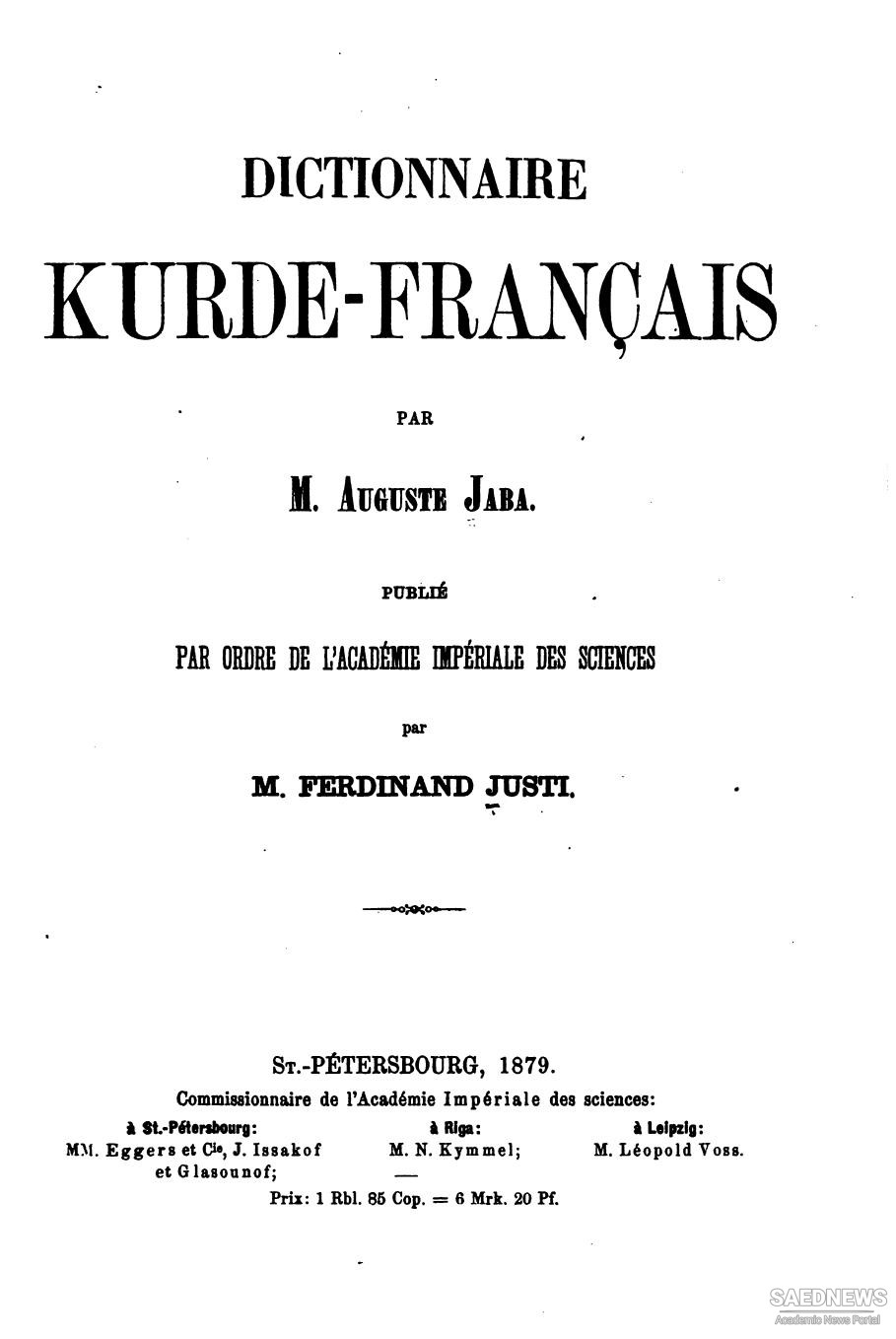In addition to the dictionary itself, this manual contained also a full account of the grammar (pp. 357 ff.) and a short anthology of texts (in transcription) selected from the Yasna , Yašts, and Vidēvdād. In the grammatical part Justi intended to put together as completely as possible all the linguistic data relevant for fully describing the phonology and morphology of this language, but without treating the dialect of the Gathas separately. His chief aim was only to summarize all the results of philological work with the Avestan texts achieved since Burnouf’s first publications. This attempt at a full grammatical and lexicographical survey of the Avestan language was successful: for decades the Handbuch became the necessary tool for studying this language. With regard to Justi’s approach to the Avesta, it must be said, that he was convinced (like Friedrich von Spiegel and others) of the authoritativeness and reliability of the Parsi tradition and of the Middle Persian (Pahlavi) translation of the Avesta. His taking side with the “traditional school” led to a sharp controversy with Martin Haug, who, like his teacher Rudolph von Roth, was of the opinion that the Avesta had to be explained from itself by comparing the Veda. In 1868 Haug criticized the Handbuch in a devastating review. On the other hand, Roth, the champion of the “Vedic school,” praised Justi’s work for its appropriate and masterly arrangement.
This view that for understanding and interpreting the Avesta the Pahlavi tradition is of fundamental significance induced Justi to familiarize himself and to deal intensively with the Middle Persian language of the Zoroastrian writings. For that purpose and for closer research into the Holy Scriptures of the Zoroastrian religion and into their Parsi tradition, he chose the Bundahišn, a work compiled in post-Sasanian times and dealing with the cosmogonic and cosmographic ideas prevailing among the Zoroastrians in the Sasanian period. In 1868 he published in Der Bundehesh (Justi, 1868) an edition of what nowadays is called the Indian Bundahišn, that is, the shorter recension of that work, which at the same time, however, exhibits the text in a more corrupt form. Contrary to N. L. Westergaard’s edition of 1851, which presented only a lithographed copy of the Copenhagen manuscript K 20, Justi included in his book, in addition to the lithographed copy of the text and a transcription into Persian characters, a full German translation (pp. 1-47) and a glossary (pp. 49-288). But apart from K 20 he used also a number of manuscripts which for several years had been accessible in London and Oxford and which are descendants from Haug’s manuscript H 6 (now housed in Munich and known as M 51b). These other manuscripts, which Justi collated and copied with the utmost care and meticulousness, present the Pāzand version, that is, they often use Avestan letters; and by utilizing and comparing these variants, which he listed in extenso on pp. 85*-118*, Justi was able to publish the first critical edition of that noteworthy literary work.
Justi’s Bundehesh was to become an important aid for Middle Persian studies at that time, because Justi had brought those studies a decisive step further by reading the Pahlavi words in a way more exact than before and particularly by solving part of the problems regarding the Aramaic elements of those texts. He recognized that the words written in an Aramaic form actually were pronounced as Persian words; that means that he was the first to help pave the way for their modern interpretation as Aramaic “heterograms.” In order to appreciate Justi’s work and his achievements in a fitting manner, we have to point out that even today there is neither a complete and reliable critical edition of the Indian nor of the (longer) Iranian Bundahišn, although the situation of Middle Persian studies has improved fundamentally since then in many respects.
In the preface of his book Justi discussed in detail the problem of dating the Bundahišn, but by leaning all too much on alleged Arabic words in the text he went astray on this question with his proposal of a date around 1000 CE (and not later than Ferdowsi). Of greater philological relevance are his observations concerning the two groups of Pahlavi manuscripts distinguished by him and also his assessment of the Parsi manuscripts as of comparatively smaller value. In contrast to the then customary habit of transcribing (seemingly transliterating) the Pahlavi characters into square Hebrew letters, Justi used the Persian script—without, however, finding acceptance.
In the field of the modern Iranian languages we come across Justi’s name particularly with regard to Kurdish. August Jaba, who was Russian consul in the Anatolian town of Erzerum, had a special interest in the Kurdish language spoken there and made a great contribution to Kurdish studies by his collections of texts and linguistic material. He entrusted two handwritten dictionaries (one Kurdish–Russian–French, the other French–Russian–Kurdish) to the Imperial Academy of Sciences in St. Petersburg. On behalf of the Academy Justi, obviously enjoying a good reputation as an Iranist, published the Dictionnaire kurde-français (Justi, 1879), which by its wealth of material (including numerous phrases and sayings) became the first noteworthy dictionary of the Kurdish language and is still today of some value. He incorporated with Jaba’s manuscripts other previously published Kurdish materials (glossaries as well as texts), such as those of Peter Lerch, and he even added references of a comparative kind. By-products of Justi’s Kurdish studies may be seen in some special articles dealing with foreign words in Kurdish, Kurdish names of animals, or the Kurdish spirants.


 Henning's Philological Works
Henning's Philological Works














































